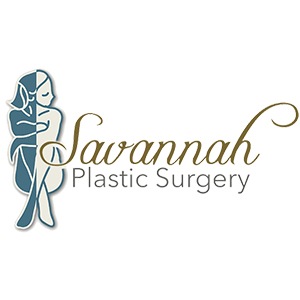When you decide to get breast implants, there are several important decisions to make. Size, shape, projection—all contribute to how your breasts will look and feel. One of the most important decisions you’ll make is choosing between saline vs. silicone breast implants.
What’s the Difference Between Silicone and Saline Implants?
All breast implants have a similar design: A silicone outer shell is filled with a substance that’s designed to mimic the look and feel of natural breast tissue. The types of breast implants differ in two ways:

- How the outer shell is constructed
- What specific substance the shell is filled with
There are two main types of breast implants: saline and silicone.
Saline implants are filled with sterile saline, or saltwater. Silicone implants are filled with a thick silicone gel. The gel varies in consistency depending on the kind of implants.
If you’re wondering, “Which is better, saline or silicone implants?” the answer is that each kind of implant has its own benefits and risks. What’s best for you may not be right for someone else’s body. The type you choose will depend on your preferences for look and feel and what you’re comfortable with.
Comparing Saline and Silicone Breast Implants
Look and Feel: Is Saline or Silicone More Natural?
Silicone implants are the most common choice for women interested in having breast augmentations. This is mainly because silicone is considered the most natural-feeling breast implant. What gives silicone implants their natural feel is the thick gel inside of them—it feels and moves in almost the same way as real breast tissue. In contrast, saline is salt water. This means it doesn’t move or feel the same as natural breast tissue.
Another potential issue with saline implants is called rippling. This can happen if someone with thin skin gets saline implants. Sometimes thinner skin can’t cover the ripples and folds that appear in the implant as the breasts move.
The Safest Breast Implant
Although saline doesn’t look or feel as natural as silicone, it does have some advantages. Because the implant’s silicone shell is filled simply with sterile saltwater, if it ruptures, it doesn’t cause any harm. The implant deflates, and the saline is absorbed into the body. For this reason, saline implants might be considered the safest kind of breast implant. It does mean that if a rupture happens, the ruptured implant loses its volume and shape quickly.
If a silicone implant ruptures, it doesn’t deflate. This is because silicone is a gel, not a liquid, so it holds its shape. With newer generations of silicone implants, rupture is less likely, and the gel stays inside the capsule if a rupture does happen. Even so, there is a risk that the rupture may cause breast pain, tissue thickening, or changes in the shape of the breast.
One downside of the thicker consistency of silicone is that if an implant ruptures, it’s harder to tell because the breast may not change shape very much. This is called a silent rupture. Because of this, some surgeons recommend their patients have regular breast check-ups every few years to make sure their implants are intact.
With both silicone and saline implants, a ruptured implant can be removed and replaced with surgery.
The Cost of Saline vs. Silicone Implants
Depending on the kind of implants you choose, silicone and saline breast implants can differ in cost. According to RealSelf, the average implant procedure costs $6,375. How much you pay varies depending on several factors, including where in the country your plastic surgeon is located and their level of experience.
A big factor in the price of your breast augmentation is the kind of implants you choose. While saline implants cost up to $1,000 per set, a set of silicone implants can cost up to $2,000. Silicone breast implants with a high level of gel cohesivity—sometimes called gummy bear implants—may cost up to $3,000 per set. Depending on the implants you choose—and other factors—you might end up paying more or less than $6,375 for your procedure. For instance, at Savannah Plastic Surgery you’ll typically pay much less than the $6,375 average, but the exact amount depends on what kind of implants you want.
Implantation Procedures: The Same or Different?
The process that surgeons use to place the different implant types is different in some situations.
Silicone implants come pre-filled with gel. Your surgeon will make an incision in your breasts and put the implants in place either on or beneath the muscle.
Saline implants can be filled either before or after implant placement. If pre-filled implants are used, the procedure is similar to that of silicone implant placement. When saline implants are filled after placement, the surgeon can adjust the volume of the implants during the procedure itself. This means smaller incisions, as your surgeon just has to fit empty shells into your chest, and the final result can be a little more flexible than it can be with silicone or pre-filled saline implants.
Breast Implant Brands
The implant brands that meet FDA implant standards are Allergan, IDEAL, MENTOR®, and Sientra® implants. While Allergan, IDEAL, and Mentor are implant manufacturers, Sientra is a distributor. The implants distributed by Sientra are made in Brazil.
Allergan
Allergan manufactures the Natrelle® line of saline and silicone breast implants. These include both smooth and Biocell® textured saline implants. Allergan’s silicone implants come in three different silicone types:
- Responsive
- SoftTouch
- Highly cohesive gels
Each are available in a variety of sizes and profile shapes. This gives you lots of choice in terms of how you want your implants to look and feel.
IDEAL
IDEAL IMPLANTS® are a special kind of saline implant. The difference is in the silicone shell that holds the saline. While other implants are typically a single saline-filled shell, IDEAL IMPLANTS are made of multiple shells, with saline in between each layer. In an IDEAL saline implant, the saline moves freely, but in a more natural way than other saline implants. This means IDEAL IMPLANTS look and feel more natural than other saline implants. It also means that wrinkling and folding is less of an issue.
MENTOR
MENTOR makes both saline and silicone implants. Their saline implants are available in three different projection options, and there are textured and smooth options too. Textured saline options come in both teardrop and round shapes.
MENTOR silicone implants come in both round and teardrop shapes. Round implants are offered in textured and smooth varieties, while teardrops are only available as textured implants. Both shapes have several different profile options.
Sientra
Sientra implants are only available in silicone, but there are several silicone options. This brand has a high-strength cohesive (HSC) gel formula that is thicker than older gel formulations. Its thicker texture has given them the name “gummy bear” implants.
HSC gel is thicker and highly cohesive, meaning it holds its shape very well. But these implants still have a soft, natural feel. HSC gummy bear implants are available in both round and teardrop shapes. Round implants come in smooth and textured forms, while teardrop implants are mostly textured. There are also different base shapes (round, oval, and classic) and projection options.
Saline vs. Silicone Breast Implants: It’s Your Choice!
Choosing between saline and silicone implants is part of what will determine the final look and feel of your new breasts, as well as how much the procedure costs. Weigh your options, and be sure to talk to your surgeon. They’ll be able to tell you even more information about silicone and saline implants and what’s right for your body.

